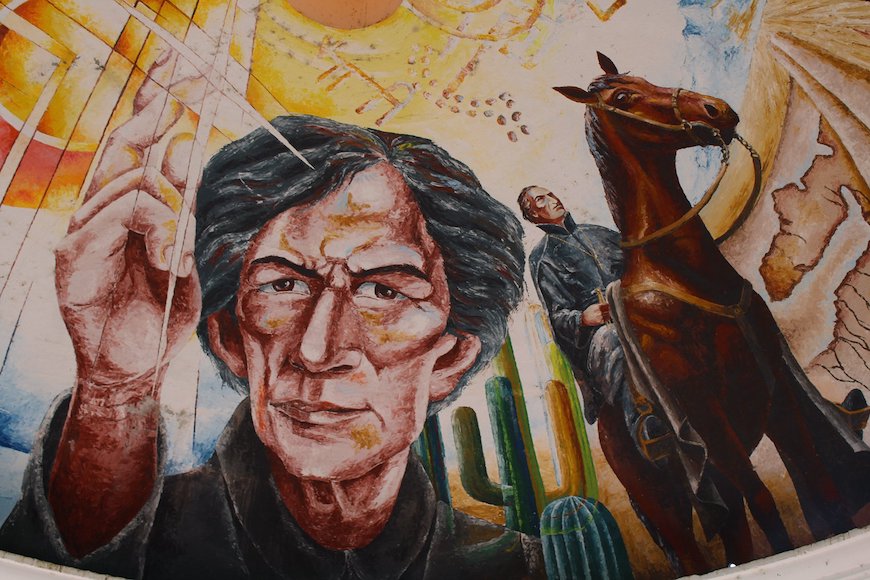Padre Eusebio Francisco Kino
1645-1711
Eusebio Francesco Chini (his name later changed to Eusebio Francisco Kino) was born on August 10, 1645, in the Italian-Germanic Alpine borderlands. He began his classical studies at the Jesuit High School in Trent, completing them in Tyrol. There, he became seriously ill, but he recovered miraculously through the intercession of St. Francis Xavier.
Deciding to enter the Society of Jesus (Jesuits), Kino vowed to dedicate his life to the missions of India, following the previous example of his cousin Martino Martini, another renowned son of Trent. In 1677, Kino was ordained a priest. He completed his preparation for the foreign missions in Spain at the Jesuit College in Seville.
On May 3, 1681, Kino arrived in Mexico (New Spain) after a three-month voyage across the Atlantic. Padre Kino’s skills as a mathematician and cartographer made him an ideal candidate to join a new expedition to colonize the Californias. The expedition failed, however, and Kino was reassigned to the missions of the mainland.
On March 13, 1687, Father Kino set out on his life’s greatest adventure: the evangelization of the Pimería Alta people in the modern borderlands of Sonora and Arizona. Although other Jesuits had been in contact with these native people for more than 40 years, very little progress had been made in connecting. Padre Kino bridged cultural borders as he was welcomed by the desert-sharing O’odham people to their homes in the Pimería Alta.
Before four years had elapsed, Father Kino had ridden through a vast new territory. Kino, the “Padre on Horseback,” set a pace that continues to challenge every person who calls himself a servant of God in this desert wilderness. He rode the thirsting trails from Quiburi to Yuma, from Sonoita to San Andres.
He was at the same time a man of God and a defender of the native people, urging peace among the warring tribes. Kino concentrated not only on their spiritual conversion but also on their economic, social and civil development. He envisioned a land of plenty that could be sustained by hard work, planning, and the gifts of God’s nature.
Kino was a pioneer-explorer, historiographer, cartographer, cowboy, rancher and peacemaker. He taught the tribes how to cultivate fruits and vegetables unknown in those lands; he introduced cattle breeding, carpentry and iron working.
Kino valiantly protected the dignity and interests of his native neophytes against the overbearing schemes of the Spanish hacendados. Fearlessly, he enforced a royal decree that exempted converted natives from hard labor in the mines and from paying tribute. Father Kino testified to the violence caused by the Spanish: “It is evident that the treatment of the Natives in the Pimería has been very unjust— leading as it has to mistreatment, torture and murder.”
Kino put his heart and soul into the 21 missions he founded that are now thriving towns in the states of Sonora and Arizona. He is believed to have traveled roughly 50,000 miles on horseback.
Father Kino took on a truly gigantic enterprise, whose fruits were souls led to God, a new life for the desert, and a distinguished recognition of the dignity and worth of native people. His tireless efforts spanned more than 24 years, until his death on March 15, 1711, in the village of Magdalena, Sonora. He died as he had lived: “in peace and poverty on the edge of something even greater.” Moved by love and compassion, Father Kino left an indelible mark on the history of the Americas.
The positio on Father Kino’s life was accepted by the Vatican in 2006, making him a “Servant of God.” On July 11, 2020, Pope Francis advanced the cause of Kino’s sainthood by recognizing his life of heroic virtue and declaring him “Venerable.” The next step in the process of canonization is for Father Kino to be declared “Blessed.” After that, the final step is to be formally canonized and thereby recognized as a saint.



